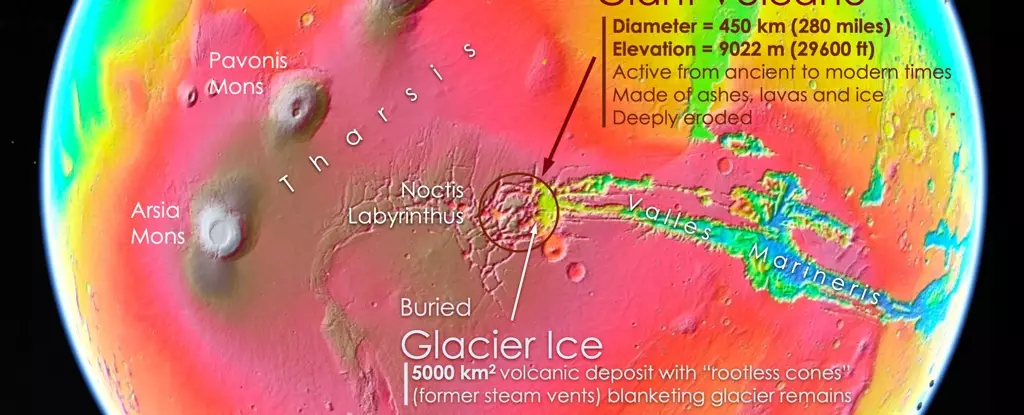Deep within the scarred landscape of Mars lies a hidden secret waiting to be uncovered. Known as Noctis Mons, this ancient volcano was recently discovered beneath the region of Noctis Labyrinthus by a team of scientists led by planetary scientist Pascal Lee of the SETI Institute. While their initial focus was on traces of an ancient glacier, they stumbled upon evidence of a massive volcano that had eluded detection for decades.
Noctis Mons stands tall at an impressive height of over 29,000 feet, making it the seventh highest elevation feature on Mars. The volcano exhibits several key features that point to its volcanic origins, including a collapsed caldera near its center, mesas forming an arc shape, and surrounding lava fields. The presence of volcanic deposits spanning nearly 2,000 square miles around the volcano suggests that it was active for a long period of time.
The Presence of Glacial Ice
One of the most intriguing findings at Noctis Mons is the discovery of blister-like mounds on one side of the volcano, interpreted as rootless cones formed by interactions between lava and ice. This aligns with previous evidence of glacial deposits in the area and suggests the presence of buried glacial ice protected by volcanic rock. The combination of warmth and water from remnant ice raises the possibility of habitable conditions beneath the surface.
The Geological History of Noctis Mons
The unique geological features of Noctis Mons, such as canyons formed by glaciation, offer insights into its complex history of thermal and glacial erosion. Satellite imagery helps piece together the evolutionary timeline of the volcano, but the active geological processes beneath the surface remain largely unknown. Recent evidence of ongoing volcanism and seismic activity on Mars raises the intriguing possibility that Noctis Mons may still be dormant but potentially active.
The discovery of Noctis Mons represents a significant milestone in Mars exploration, providing a glimpse into the planet’s geological evolution and potential for ancient life. Its long-lived volcanic history, coupled with the interaction of heat and water, makes it an ideal location for astrobiological studies and future exploration. The preservation of glacier ice in an equatorial region further enhances its appeal for robotic and human missions.
Noctis Mons on Mars stands as a testament to the planet’s rich geological history and potential for harboring signs of ancient life. The ongoing exploration of this hidden volcano offers valuable insights into Mars’ past and the conditions necessary for life to emerge. As researchers continue to unravel the mysteries of Noctis Mons, the possibilities for groundbreaking discoveries and advancements in planetary science are endless.


Leave a Reply